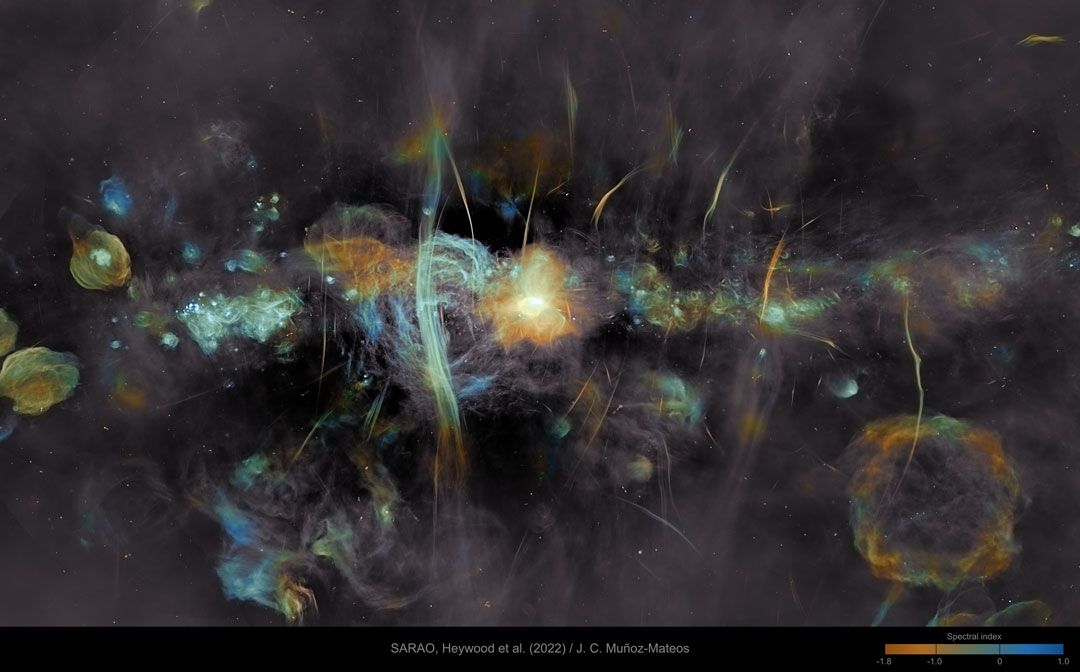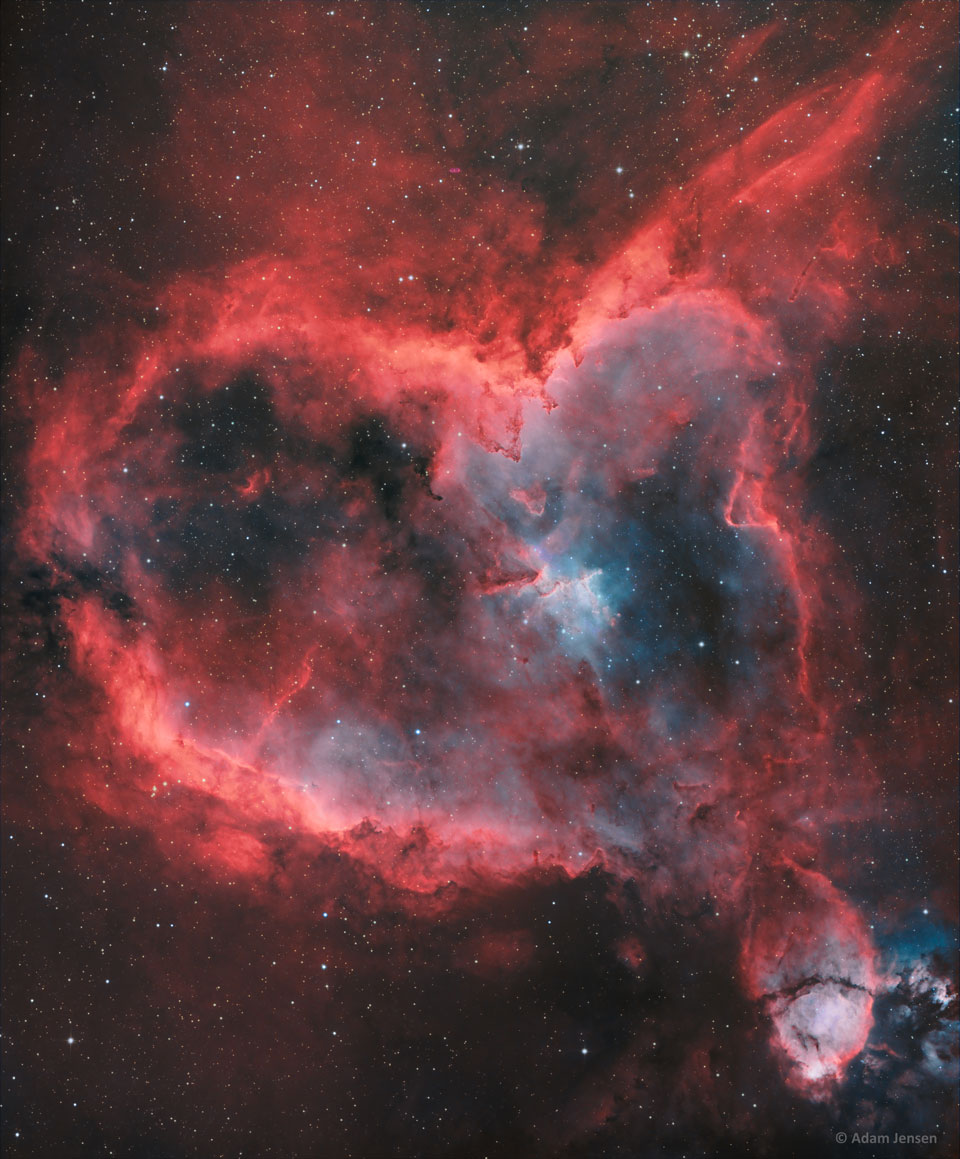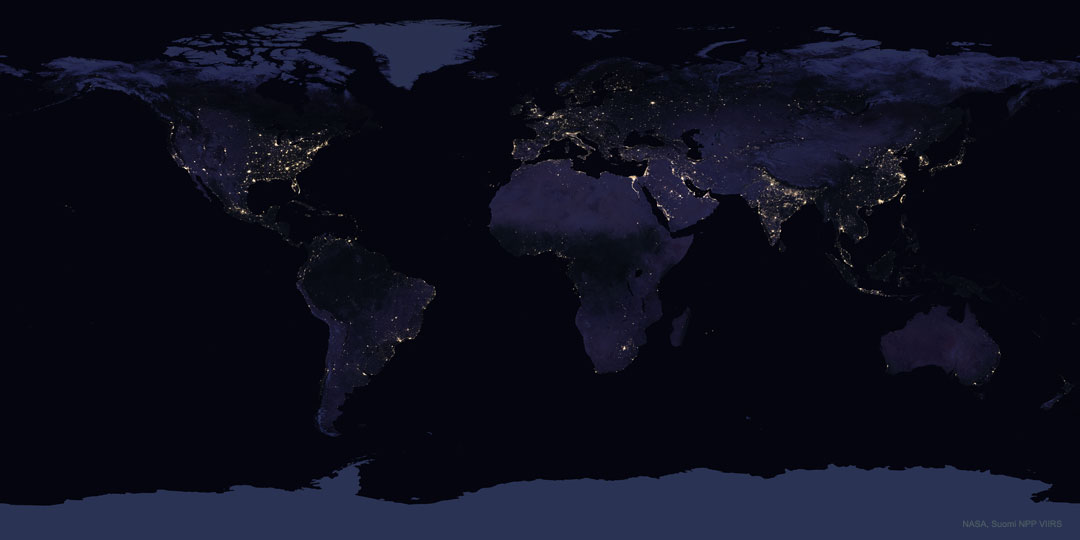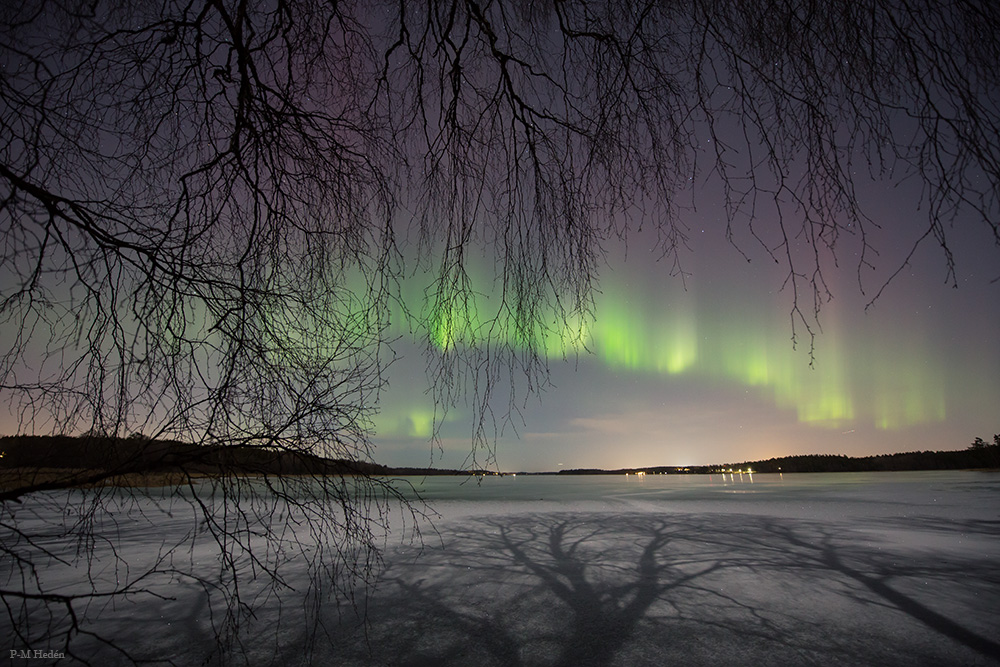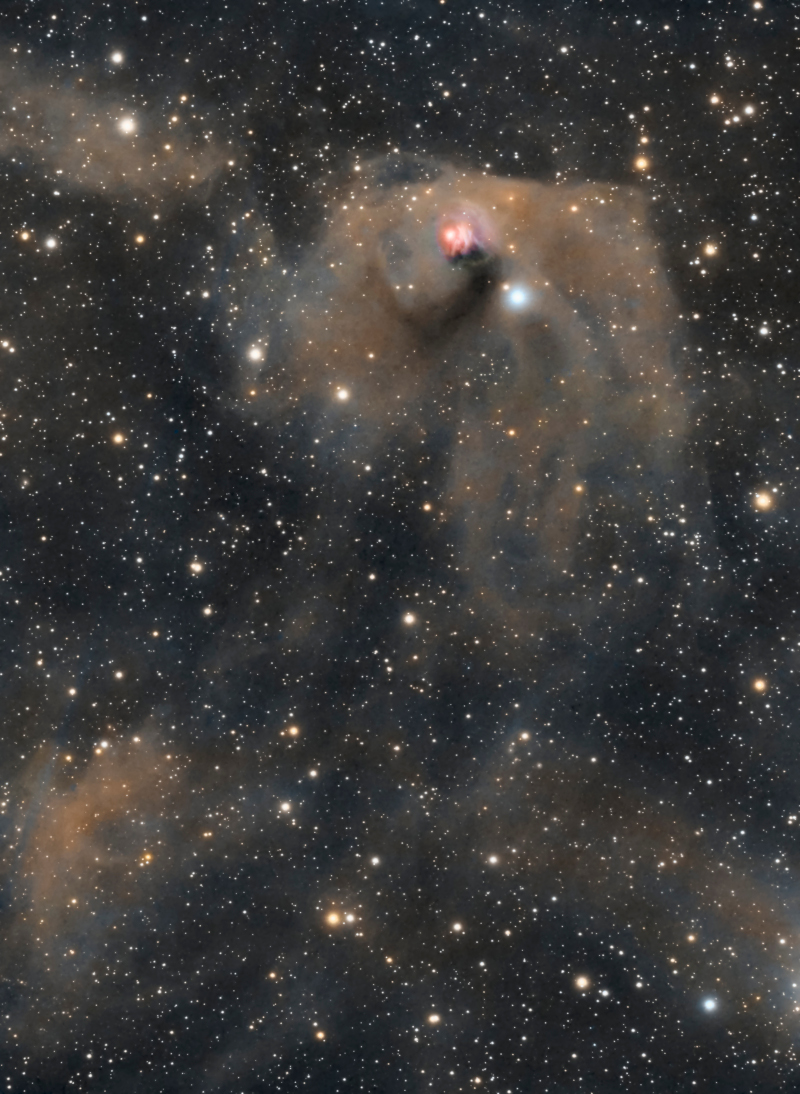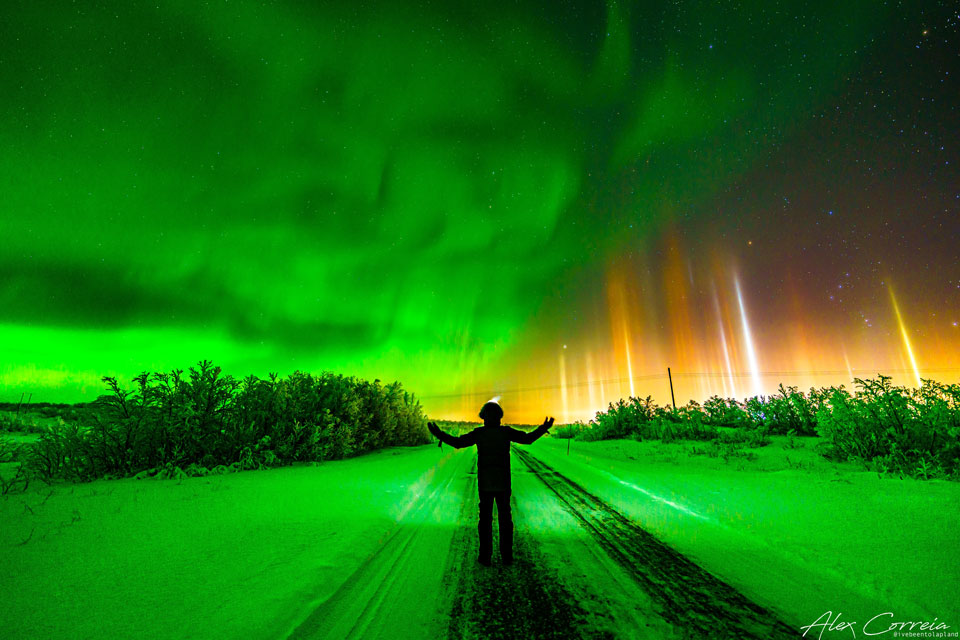Le sel est essentiel à la vie, mais l'organisme n'en a besoin que d'une petite quantité. Quand le corps reçoit trop de sel, que la concentration de sel devient trop élevée dans son sang, il doit faire en sorte de s'en débarrasser. Le corps élimine le surplus de sel dans l'urine, via les reins.Mais en éliminant le sel, ils éliminent aussi de l'eau, parce que le sel entraîne naturellement l'eau avec lui. Il y a alors un déséquilibre dans le sang. Le sang manque d'eau. Quand la quantité d'eau diminue dans le sang, le sang en informe le cerveau.
Nombre total de pages vues
16/02/2022
POURQUOI - SANTé/MéDECINE - Pourquoi a-t-on soif quand on mange un aliment salé ?
ASTRONOMY - Eiffel Tower Prominence on the Sun
2022 February 16
Video Credit & Copyright: Hawk Wolinski
Explanation: What's that on the Sun? Although it may look like a flowing version of the Eiffel Tower, it is a solar prominence that is actually much bigger -- about the height of Jupiter. The huge prominence emerged about ten days ago, hovered over the Sun's surface for about two days, and then erupted -- throwing a coronal mass ejection (CME) into the Solar System. The featured video, captured from the astrophotographer's backyard in Hendersonville, Tennessee, USA, shows an hour time-lapse played both forwards and backwards. That CME did not impact the Earth, but our Sun had unleashed other recent CMEs that not only triggered Earthly auroras, but puffed out the Earth's atmosphere enough to cause just-launched Starlink satellites to fall back. Activity on the Sun, including sunspots, prominences, CMEs and flares, continues to increase as the Sun evolves away from a deep minimum in its 11-year magnetic cycle.
15/02/2022
AERONAUTIQUE - Le SpaceLiner : un avion suborbital
ASTRONOMY - The Galactic Center in Radio from MeerKAT
2022 February 15
Image Credit: Ian Heywood (Oxford U.), SARAO; Color Processing: Juan Carlos Munoz-Mateos (ESO)
Explanation: What's happening at the center of our galaxy? It's hard to tell with optical telescopes since visible light is blocked by intervening interstellar dust. In other bands of light, though, such as radio, the galactic center can be imaged and shows itself to be quite an interesting and active place. The featured picture shows the latest image of our Milky Way's center by the MeerKAT array of 64 radio dishes in South Africa. Spanning four times the angular size of the Moon (2 degrees), the image is impressively vast, deep, and detailed. Many known sources are shown in clear detail, including many with a prefix of Sgr, since the galactic center is in the direction of the constellation Sagittarius. In our Galaxy's Center lies Sgr A, found here in the image center, which houses the Milky Way's central supermassive black hole. Other sources in the image are not as well understood, including the Arc, just to the left of Sgr A, and numerous filamentary threads. Goals for MeerKAT include searching for radio emission from neutral hydrogen emitted in a much younger universe and brief but distant radio flashes.
14/02/2022
ASTRONOMY - In the Heart of the Heart Nebula
2022 February 14
Image Credit & Copyright: Adam Jensen
Explanation: What excites the Heart Nebula? First, the large emission nebula dubbed IC 1805 looks, in whole, like a human heart. Its shape perhaps fitting of the Valentine's Day, this heart glows brightly in red light emitted by its most prominent element: excited hydrogen. The red glow and the larger shape are all created by a small group of stars near the nebula's center. In the heart of the Heart Nebula are young stars from the open star cluster Melotte 15 that are eroding away several picturesque dust pillars with their energetic light and winds. The open cluster of stars contains a few bright stars nearly 50 times the mass of our Sun, many dim stars only a fraction of the mass of our Sun, and an absent microquasar that was expelled millions of years ago. The Heart Nebula is located about 7,500 light years away toward the constellation of the mythological Queen of Aethiopia (Cassiopeia).
13/02/2022
ASTRONOMY - Earth at night
2022 February 13
Image Credit: NASA, Suomi NPP VIIRS; Data: Miguel Román (NASA GSFC); Processing: Joshua Stevens
Explanation: This is what the Earth looks like at night. Can you find your favorite country or city? Surprisingly, city lights make this task quite possible. Human-made lights highlight particularly developed or populated areas of the Earth's surface, including the seaboards of Europe, the eastern United States, and Japan. Many large cities are located near rivers or oceans so that they can exchange goods cheaply by boat. Particularly dark areas include the central parts of South America, Africa, Asia, and Australia. The featured image, nicknamed Black Marble, is actually a composite of hundreds of pictures remade in 2016 from data taken by the orbiting Suomi NPP satellite.
12/02/2022
ASTRONOMY - Aurora by Moonlight
2022 February 12
Image Credit & Copyright: P-M Hedén (Clear Skies, TWAN)
Explanation: The ice was singing as light from a bright gibbous Moon cast shadows across this frozen lake, about 20 kilometers north of Stockholm, Sweden, planet Earth. In the alluring night skyscape captured on February 10, shimmering auroral curtains of light dance in the evening sky. On that northern night nature's performance included the auroral displays fostered by a minor geomagnetic storm. Stormy space weather was the result of a coronal mass ejection, erupting from a solar prominence days earlier and brushing our fair planet's magnetosphere.
10/02/2022
AERONAUTIQUE - L'Airbus A300-600ST ou l'avion " Beluga"
ASTRONOMY - T Tauri and Hind's Variable Nebula
2022 February 10
Image Credit & Copyright: Dawn Lowry, Gian Lorenzo Ferretti, Ewa Pasiak and Terry Felty
Explanation: The star with an orange tint near top center in this dusty telescopic frame is T Tauri, prototype of the class of T Tauri variable stars. Next to it (right) is a yellow cosmic cloud historically known as Hind's Variable Nebula (NGC 1555). About 650 light-years away, at the boundary of the local bubble and the Taurus molecular cloud, both star and nebula are seen to vary significantly in brightness but not necessarily at the same time, adding to the mystery of the intriguing region. T Tauri stars are now generally recognized as young (less than a few million years old), sun-like stars still in the early stages of formation. To further complicate the picture, infrared observations indicate that T Tauri itself is part of a multiple system and suggest that the associated Hind's Nebula may also contain a very young stellar object. The well-composed image spans about 8 light-years at the estimated distance of T Tauri.
08/02/2022
ASTRONOMY - Aurora and Light Pillars over Norway
2022 February 8
ASTRONOMY - Orion and the Ocean of Storms
2025 December 13 Orion and the Ocean of Storms Image Credit: NASA , Artemis 1 Explanation: On December 5, 2022, a camera on board the u...

-
2022 September 26 All the Water on Planet Earth Illustration Credit: Jack Cook, Adam Nieman, Woods Hole Oceanographic Institution ; Data ...
-
2025 May 11 The Surface of Venus from Venera 14 Image Credit: Soviet Planetary Exploration Program , Venera 14 ; Processing & Copyri...


